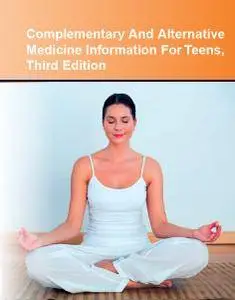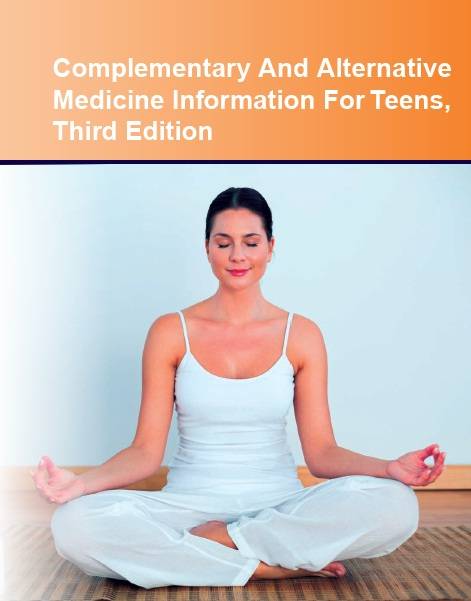Complementary and Alternative Medicine Information for Teens, Third Edition
Omnigraphics | English | 2018 | ISBN-10: 078081617X | 414 pages | PDF | 1.43 MB
Omnigraphics | English | 2018 | ISBN-10: 078081617X | 414 pages | PDF | 1.43 MB
by Siva Ganesh Maharaja (Author, Editor)
Complementary And Alternative Medicine Information For Teens, Third Edition provides updated information about complementary and alternative medicine (CAM) systems, therapies, and practices, including various whole medical systems, manipulative practices, and movement therapies. Mind- body medicine, biologically based practices, energy medicine, and creative arts therapies are also discussed. A special section describes CAM therapies intended to help patients with specific diseases and conditions, such as cancer, diabetes, asthma, irritable bowel syndrome, and attention deficit hyperactivity disorder (ADHD). The book concludes with information about CAM clinical trials, suggestions for further reading, and a directory of CAM resources.
This book is divided into parts and chapters. Parts focus on broad areas of interest; chapters are devoted to single topics within a part.
Part One: Introduction To Complementary And Alternative Medicine defines CAM, provides statistics on CAM use in the United States, and describes how to evaluate web-based CAM information. It includes suggestions for selecting a CAM practitioner and offers tips for talking with a conventional health care provider about the possibility of pursuing CAM therapies.
Part Two: Whole Medical Systems explains systems of medicine that were built upon theories and practices that developed separately, and often independently, from the standard approach to medicine used among physicians in Western nations. These include traditional Chinese medicine, Ayurvedic medicine, homeopathy, and others.
Part Three: Manipulative Practices And Movement Therapies describes procedures based on the theory that different types of body repositioning can have an effect on health and well-being. Chiropractic medicine, kinesiology, massage therapy, Rolfing structural integration, and Feldenkrais method are among the techniques explained.
Part Four: Mind-Body Medicine discusses therapies that rely on focus and relaxation. These include biofeedback, meditation, hypnotherapy, aromatherapy, and guided imagery. Qigong, tai chi, and yoga are also included, and spirituality as a form of CAM therapy is addressed.
Part Five: Biologically Based Practices provides facts about nutrition and health, dietary and antioxidant supplements, herbal medicine, and botanical products—including one of the most controversial: marijuana. It also explains biologically based practices, such as oral probiotics, apitherapy, Gonzalez Regimen, and the Gerson therapy. In addition, specialized diets (such as raw food, macrobiotic, and detox diets) are discussed.
Part Six: Energy Medicine describes practices purported to induce healing by manipulating the body’s life force. These include acupuncture, which has been studied extensively related to its role in pain management and nausea relief, and others about which less is known, such as magnet therapy, therapeutic touch, reiki, and crystal therapies.
Part Seven: Creative Arts Therapies discusses how art, color, and music therapies can affect health in a positive way.
Part Eight: CAM Treatments For Cancer And Other Diseases And Conditions offers information about the types of complementary health therapies that are used most frequently for cancer, pain management, asthma, diabetes, irritable bowel syndrome, attention deficit hyperactivity disorder (ADHD), posttraumatic stress disorder (PTSD) and other health concerns.
Part Nine: If You Need More Information includes facts about finding CAM clinical trials. It also provides suggestions for additional reading and a directory of organizations able to provide further materials about CAM therapies and practices.



